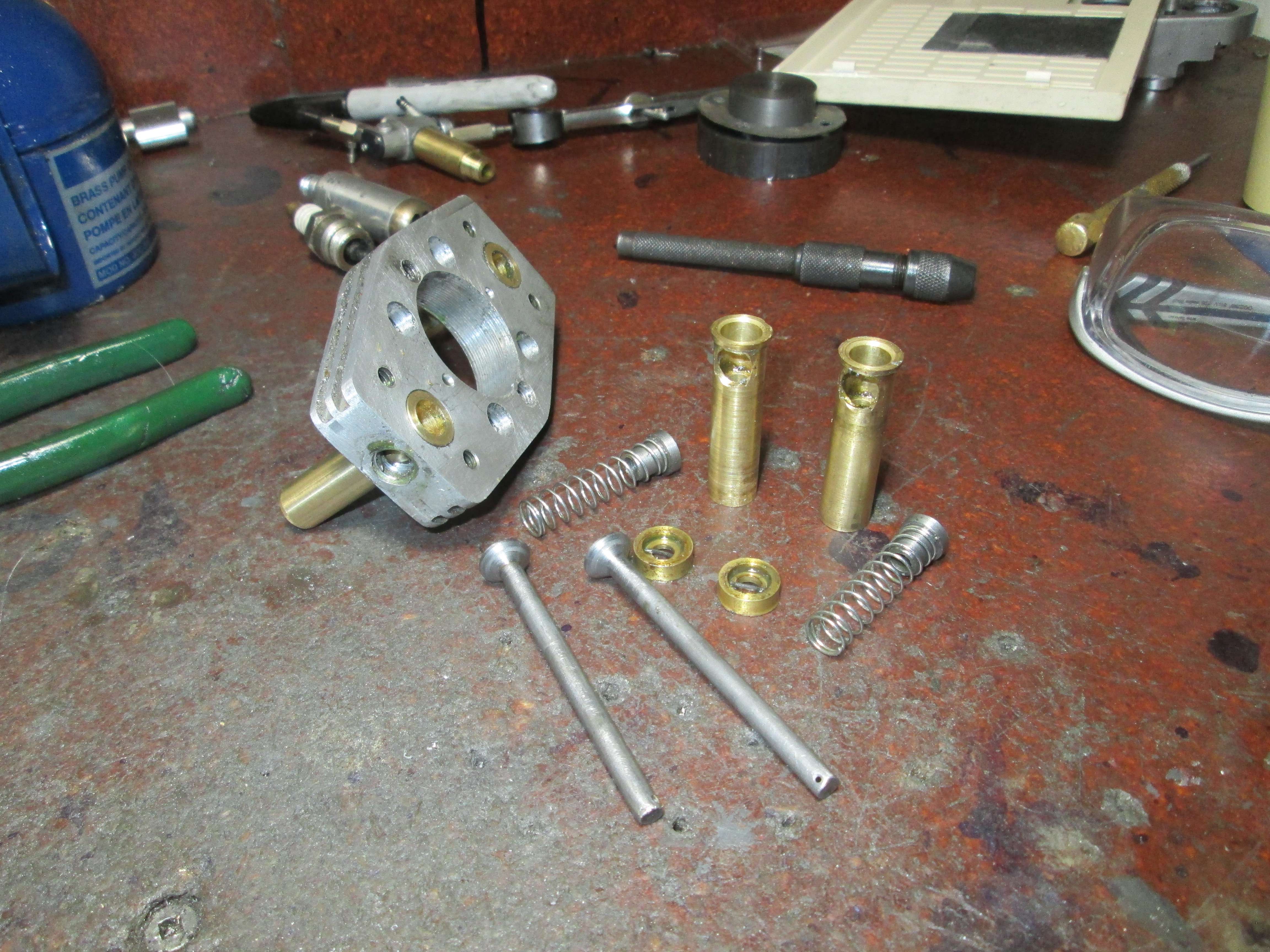The Helicoils worked great. I have never used them before and I must say, they work fine and don't require a lot of work to use them. I did machine new spring cups and install them and the heavy valve springs on the engine, but it didn't really help. I then took the cylinder head off the machine and ran a 0.200" diameter drill up from the bottom side of the valve cages, about 0.6" to cut down on the amount of friction between the valve stems and the valve guide portion of the valve cage. I took the heavy springs and cups off and put the originals back on. I reground the valves. Nothing really helped get my compression back. Something I have noticed over the years--When the seat portion of the valve cage gets too large, it is almost impossible to get a good valve seal. I'm stumped at the moment. I may machine new valve cages and reface the valves in the lathe, more or less starting over again with the valve sealing issue. I have rechecked the valve and ignition timing, but they are fine.
















































